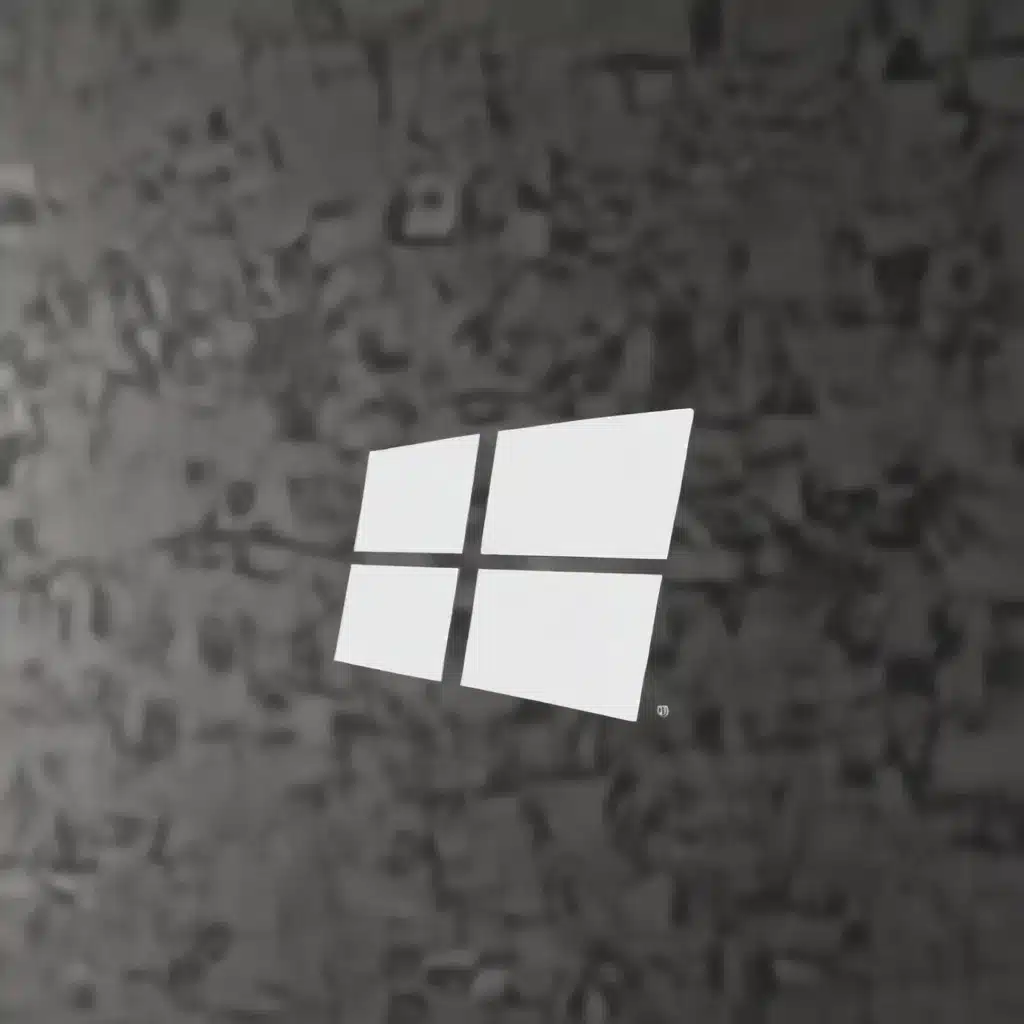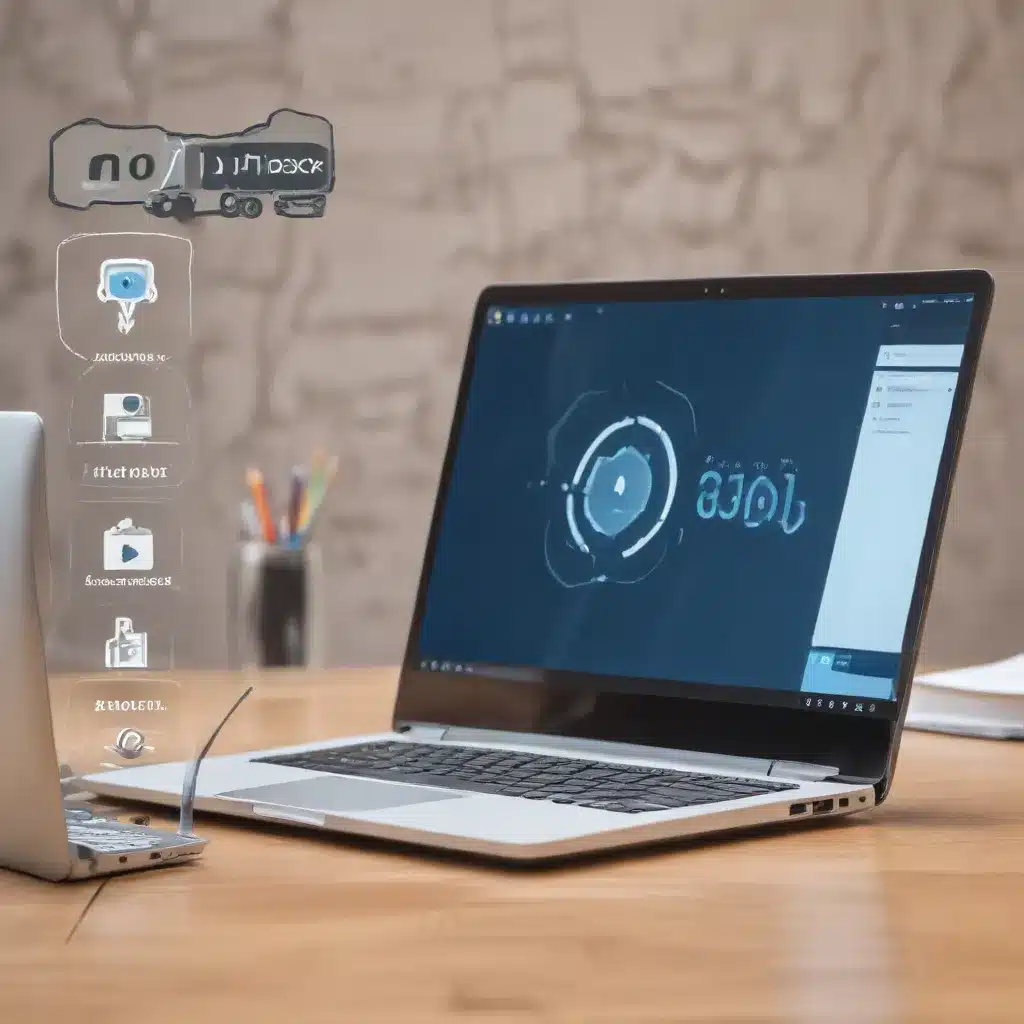As an experienced IT specialist, I’ve seen firsthand the rapidly evolving landscape of computer technology and cybersecurity. In this article, I’ll share my personal insights and practical tips to help you navigate the complexities of modern computing, safeguarding your digital assets, and staying ahead of the curve in the ever-changing IT industry.
Fortifying Your Computer’s Defenses
One of the most crucial aspects of IT maintenance is ensuring your computer’s security features are properly configured and optimized. I’ve encountered countless situations where a simple tweak or adjustment could have prevented a devastating security breach or system failure.
Let’s start by exploring the security features built into the hardware and software of your device. Apple’s security guide provides a comprehensive overview of the security capabilities designed into their devices, from the secure startup process to the layers of app protection. Similarly, Microsoft’s Teams security guide outlines the robust security measures integrated into their communication platform, including end-to-end encryption and advanced threat mitigation.
One area that’s often overlooked is the importance of encryption. Apple’s devices, for example, feature powerful encryption features to safeguard user data and enable remote wipe in case of theft or loss. Understanding these built-in security mechanisms and how to utilize them is crucial for maintaining the integrity of your sensitive information.
Navigating the Cybersecurity Minefield
As an IT specialist, I’ve seen the devastating impact that cyber attacks can have on individuals and organizations. Phishing scams, malware, and other malicious threats are constantly evolving, and it’s essential to stay vigilant and proactive in your approach to cybersecurity.
One of the key strategies I’ve found effective is the implementation of a robust Zero Trust security framework. This approach, which is championed by Microsoft Teams, involves verifying the identity and trustworthiness of every user, device, and application before granting access to corporate resources. By adopting the principles of Least Privilege access, you can significantly reduce the risk of unauthorized access and data breaches.
Another critical component of cybersecurity is employee education. It’s crucial to ensure that your team, and even your family members, are well-versed in the latest phishing tactics and best practices for identifying and reporting suspicious activities. The Apple Personal Safety guide offers valuable insights and strategies for safeguarding your digital accounts and devices, which can be applied in both personal and professional contexts.
Harnessing the Power of Technological Advancements
The IT industry is constantly evolving, with new technologies and innovations emerging at a breakneck pace. As an IT specialist, it’s my responsibility to stay ahead of the curve and leverage these advancements to improve the efficiency, productivity, and security of the systems I manage.
One area that has seen remarkable progress in recent years is the field of encryption. The Microsoft Teams security guide highlights the various encryption protocols and techniques used to protect data in transit and at rest, such as TLS, SRTP, and DTLS. By understanding these advanced encryption methods and how they integrate with the broader Microsoft 365 ecosystem, I’ve been able to implement robust security measures that give my clients peace of mind.
Another exciting development in the IT industry is the rise of artificial intelligence and machine learning. These technologies are being leveraged to enhance cybersecurity, automate routine tasks, and even predict and prevent system failures before they occur. As an IT specialist, I’m constantly exploring ways to harness the power of these cutting-edge tools to streamline my workflows and provide superior service to my clients.
Empowering Users: Tips and Tricks for IT Mastery
While the technical aspects of IT management are undoubtedly important, I’ve found that effective communication and user education are just as crucial for success. As an IT specialist, it’s my role to not only maintain and secure the systems I oversee but also to empower users with the knowledge and skills they need to be responsible digital citizens.
One of the key strategies I employ is to provide clear and concise instructions on how to utilize the security features built into the software and devices they use. By equipping users with the ability to customize their privacy settings, manage their digital footprint, and identify potential threats, I’ve been able to significantly reduce the risk of data breaches and unauthorized access.
Another area where I’ve focused my efforts is in optimizing connectivity and performance for remote users. With the rise of hybrid and remote work, ensuring seamless and secure access to corporate resources has become a top priority. By leveraging the guidance on optimizing Microsoft 365 or Office 365 connectivity, I’ve been able to help my clients maintain high levels of productivity and collaboration, even in the face of challenging network conditions.
Embracing the Future: Trends and Innovations in IT
As an IT specialist, I’m constantly fascinated by the rapid advancements and paradigm shifts that are shaping the industry. From the rise of edge computing and the Internet of Things to the increasing adoption of cloud-based services and the growing importance of data analytics, the IT landscape is constantly evolving, and it’s crucial for professionals like myself to stay ahead of the curve.
One trend that I’ve been closely following is the growing emphasis on security in the design and development of new technologies. The Microsoft Teams security guide highlights the company’s commitment to Trustworthy Computing and the integration of security best practices throughout the product lifecycle. This holistic approach to security, which prioritizes threat modeling, secure coding practices, and proactive vulnerability management, is a model that I believe should be emulated across the IT industry.
Another exciting development is the increasing use of artificial intelligence and machine learning in IT management. These powerful tools are being leveraged to automate mundane tasks, predict system failures, and even detect and respond to cyber threats in real-time. As an IT specialist, I’m constantly exploring ways to incorporate these technologies into my workflow, allowing me to focus on higher-level strategic initiatives and provide more value to my clients.
Conclusion: Embracing the IT Frontier
As an experienced IT specialist, I’ve had the privilege of witnessing firsthand the remarkable advancements and challenges that have shaped the industry over the years. From the ever-evolving landscape of cybersecurity to the rapid pace of technological innovation, the world of IT is a dynamic and exciting frontier that demands constant vigilance, adaptability, and a thirst for knowledge.
In this article, I’ve shared my personal insights and practical tips on securing your digital assets, navigating the cybersecurity minefield, harnessing the power of technological advancements, and empowering users to become responsible digital citizens. By embracing these strategies and staying at the forefront of industry trends, I believe that IT professionals like myself can play a vital role in shaping the future of computing and safeguarding the digital infrastructure that underpins our modern world.
If you’re interested in learning more about IT Fix and our approach to providing comprehensive computer maintenance, cybersecurity solutions, and technological expertise, I encourage you to visit our website. There, you’ll find a wealth of resources and insights to help you unlock the full potential of your digital devices and stay ahead of the curve in the ever-evolving IT landscape.












